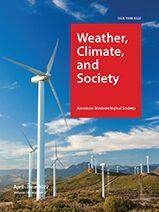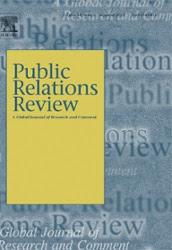Anita Atwell Seate

Education
Ph.D., , University of Arizona
Research Expertise
Crisis & Risk Communication
Intercultural Communication
Media Studies
Public Relations
Dr. Anita Atwell Seate is a social scientist that has two areas of research interest: intergroup communication and public relations/strategic communication. Across these areas of study, Dr. Atwell Seate is interested in how people’s social identities influence communication processes.
Dr. Atwell Seate’s work finds that identity-based factors, including (intergroup) emotions and social identity importance are crucial to consider in understanding how people receive messages and their subsequent behavioral outcomes. Dr. Atwell Seate studies a variety of social groups including social identities based on race, ethnicity, age, gender, and sexual orientation, with an emphasis placed on racial and ethnic groups. Dr. Atwell Seate uses a variety of methods in their work including experimental design, quantitative content analysis, survey design, interviews, multi-sited rapid ethnography, qualitative comparative analysis, and rhetorical criticism.
In terms of their intergroup communication scholarship, Dr. Atwell Seate is currently working on a monograph examining how intergroup threat is constructed through discourse, using both critical and social scientific approaches (with Dr. Michelle Murray Yang). Dr. Atwell Seate has presented and workshopped ideas from this project at Eastern Communication Association and the Rhetoric Society of America, Institute.
Regarding their current public relations and strategic communication scholarship, Dr. Atwell Seate is the Principal Investigator of a grant from National Oceanic and Atmospheric Administration’s VORTEX-SE Program [Co-PIs: Dr. Brooke F. Liu, Dr. Ji Youn Kim, and Mr. Daniel Hawblitzel]. For this project, the research team is working with the National Weather Service to develop a risk communication toolkit. The risk communication toolkit will be developed with operational practioners and will validated through a series of experiments with members of the public. This is Dr. Atwell Seate’s second VORTEX-SE grant award.
Publications
All joking aside? Comparing the effects of a humorous vs. a non-humorous message strategy in building organization–public relationships and community resilience
An online experiment in the context of weather messages
Contributor(s): Jiyoun Kim, Brooke Fisher Liu, Anita Atwell Seate, Saymin LeeNon-ARHU Contributor(s): Daniel Hawblitzel
Funding Agency:
We thank the National Oceanic and Atmospheric Administration (NOAA) for funding this research through the VORTEX-SE Program (Award NA20OAR4590454). The views and conclusions contained in this paper are those of the authors and should not be interpreted as necessarily representing the official policies, either expressed or implied, of NOAA.
Communication scholars have studied the persuasive power of humor messages, but research provides mixed results. Also, the literature has been slow in demonstrating the practical effects of humorous messages on desired outcomes (e.g., organization–public relationships). Through an online experiment in the context of weather messages with samples of U.S. adults residing in the Southeastern U.S. (N = 209), we compared a humorous social media message designed to build relationships with the public to a non-humorous message in predicting OPRs and perceived community resilience when there is no high-impact weather on the horizon. Compared to a humorous message, a non-humorous message appeared to be more effective in increasing perceived community resilience and three dimensions of positive OPRs – trust, control mutuality, and commitment. The effects were more robust for community members with low to moderate levels of weather salience (i.e., the psychological value and importance that people have for the weather).
To warn or not to warn: Factors influencing National Weather Service warning meteorologists’ tornado warning decisions.
Weather warnings are critical risk communication messages because they have the potential to save lives and property during emergencies. However, making warning decisions is challenging.
Author/Lead: Jiyoun KimContributor(s): Anita Atwell Seate, Brooke Fisher Liu
Non-ARHU Contributor(s): Daniel Hawblitzel, Theodore Funk

Weather warnings are critical risk communication messages because they have the potential to save lives and property during emergencies. However, making warning decisions is challenging. While there have been significant advances in technological weather forecasting, recent research suggests that social factors, including communication, influence warning meteorologists’ decisions to warn. We examine the roles of both scientific and social factors in predicting warning meteorologists’ decisions to warn on tornadoes. To do so, we conducted a cross-sectional survey of National Weather Service forecasters and members of management in the southern and the central regions of the United States, as well as conducted a retrospective data analysis of cross-sectional survey data from the central region Tornado Warning Improvement Project. Results reveal that dependency on radar velocity couplet and a variety of social factors predicted decisions to warn.
Are you prepared for the next storm? Developing social norms messages to motivate community members to perform disaster risk mitigation behaviors
Preparing for natural disasters and adapting to climate change can save lives. Yet, minimal research has examined how governments can motivate community members to prepare for disasters.
Author/Lead: Brooke Fisher Liu, Anita Atwell SeateNon-ARHU Contributor(s): JungKyu Rhys Lim

Preparing for natural disasters and adapting to climate change can save lives. Yet, minimal research has examined how governments can motivate community members to prepare for disasters (e.g., purchasing flood insurance or installing water barriers in homes for floods and hurricanes). Instead, studies have focused on how to communicate actions individuals should take during disasters, rather than before disasters. This study develops messages targeting social norms, which are promising approaches to motivate community members to adopt disaster risk preparedness and mitigation behaviors. Specifically, we developed a variety of messages integrating descriptive norms (i.e., what others do), injunctive norms (i.e., what others believe should be done), and a social norms-based fear appeal, or social disapproval rationale (i.e., a negative social result of [not] taking behaviors). Then, we tested these messages through two between-subject factorial online experiments in flood- and hurricane-prone U.S. states with adult samples (N = 2,286). In experiment 1 (i.e., purchasing flood insurance), the injunctive norms message using weather forecasters and the social disapproval rationale message significantly increased social norms perceptions, which in turn influenced behavioral intentions. In experiment 2 (i.e., installing water barriers), the injunctive norms message using weather forecasters, the injunctive norms message using neighbors, and the social disapproval rationale message significantly increased social norms perceptions, which in turn influenced mitigation intentions. However, the descriptive social norms message was not effective in increasing social norms perceptions. We provide some of the first empirical evidence on how organizations’ risk communication can empower community members to prepare and mitigate the impact of disasters.
Tornado warning: Understanding the National Weather Service’s communication strategies
This study explores the National Weather Service’s communication through a multi-sited rapid ethnography that extends the fully functioning society theory.
Author/Lead: Brooke Fisher LiuContributor(s): Anita Atwell Seate
Non-ARHU Contributor(s): Iles, Irina; Herovic, Emina
This study explores the National Weather Service’s communication through a multi-sited rapid ethnography that extends the fully functioning society theory. National Weather Service field offices do not employ public information officers. Instead, forecasters predict the weather, craft messages, and build relationships with their publics. Scholars have called for public relations research that examines messages, including how crisis communication can help publics cope. Additionally, scholars have noted that all organizations need public relations, even if they do not employ formal public relations personnel. In our study, forecasters emphasized the need to build their publics’ tornado threat awareness and provided strategies to make weather science accessible. Forecasters discussed a variety of message strategies including avoiding fear appeals, humanizing the organization, and visualizing risks. Forecasters also built relationships with active publics through soliciting weather spotters and empowering them to prepare others for severe weather. Overall, findings expand knowledge about how organizations can employ strategic public relations to benefit society, thereby extending fully functioning society theory.
Eyes of the Storm: How Citizen Scientists Contribute to Government Forecasting and Risk Communication
This study examines citizens who volunteer as weather spotters through a case study of an award-winning network.
Author/Lead: Brooke Fisher LiuContributor(s): Anita Atwell Seate
Non-ARHU Contributor(s): Irina Iles & Emina Herovic

Since the 1970s, the National Weather Service has trained citizens to collect, confirm, verify, or supplement radar and other data to contribute to a weather-ready nation. This study examines citizens who volunteer as weather spotters through a case study of an award-winning network. We uncover what motivates citizens to become involved in government science projects. Through the lens of relationship management theory and the related network approach, the study provides some of the first evidence on the benefits and drawbacks of citizens serving as amateur scientists and risk communicators and how these citizen scientists sustain their relationships with government scientists.


